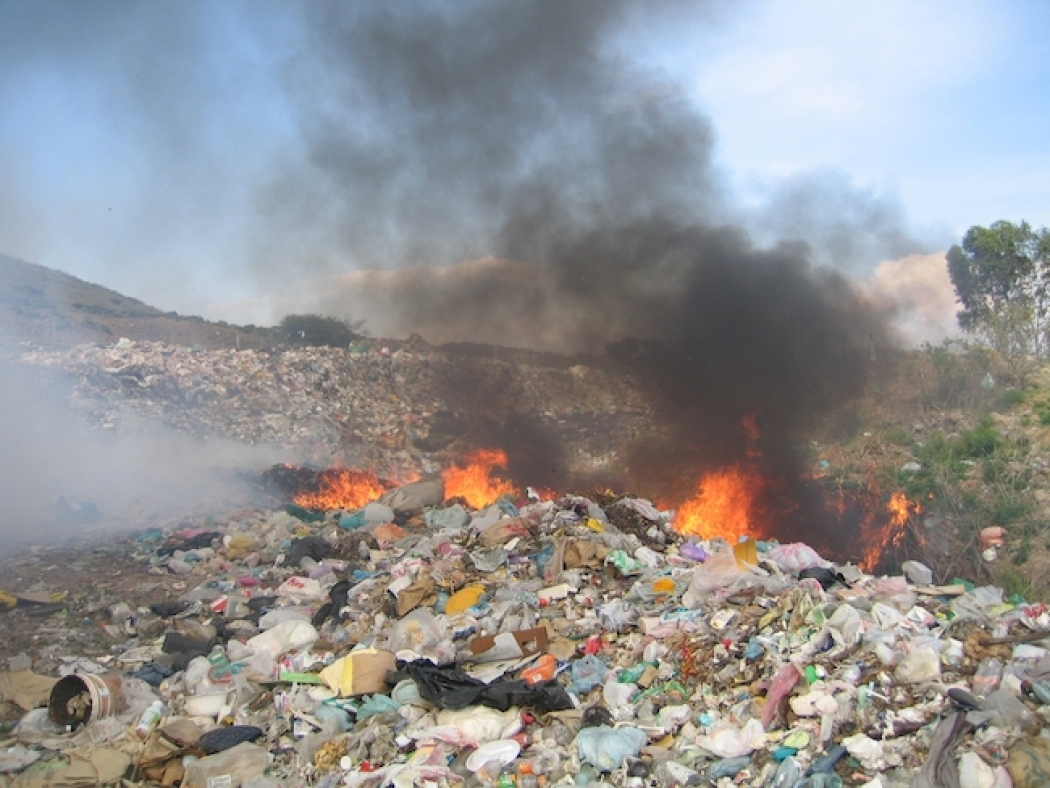Illegal waste burning in Tehran's districts 18 and 19 has raised concerns among authorities, compelling them to take urgent action to combat it.
Reports were released of the illegal practice in the southern areas of Taqiabad and Khalazir.
"The offenders illegally separated and recycled the garbage and burnt the rest," Mohammad Hossein Bazgir, the head of the provincial office of the Department of Environment, was quoted as saying by ISNA.
The DOE started legal proceedings and two cases related to the two areas have now been filed with judicial authorities for further legal action.
Waste burning in cities is against the law. Although the governors are instructed to strictly enforce the law, offenders continue to burn these materials as the easiest way to get rid of them.
According to Isa Kalantari, the head of the Department of Environment, waste burning is one of the causes of worsening air quality and should certainly be carried out outside the urban zone after gaining the approval of environmental authorities, be it in the capital or other provinces.
Noting that some 60 areas in southern Tehran are used as waste burning spots, Kalantari said, "Unfortunately, legally prosecuting the offenders is a complex issue, for the offenders leave the place after igniting the garbage without any trace."
To solve the problem, DOE authorities have prioritized the detection of potential areas for such illegal waste burning in their environment monitoring schemes.
Tehran's Waste Woes
Tehran has been long struggling to find an efficient way for waste disposal, which can be a source of wealth if properly managed and recycled. But seemingly, the officials have only had few noticeable achievements over the issue, due to a lack of strategies and facilities.
Incineration is a waste treatment process that converts waste into ash, flue gas and heat. The heat generated by incineration can be used to generate electrical power. The method can reduce the solid mass of the original waste by 80-85%.
There are two landfills in Tehran, Kahrizak (also known as Aradkouh) and Abali, one of which is equipped with the incineration machinery.
Reportedly, Kahrizak landfill, 24 km from the southernmost tip of Tehran, has been in use to store urban garbage, receiving over 8,000 tons of waste daily.
Part of the waste is used for compost production and a portion is incinerated for electricity production.
According to Bazgir, the Aradkouh incineration plant was constructed in 2015 and is capable of generating 2 MW of electricity per day.
However, "the equipment at the landfill is in dire need of maintenance and upgrade", the official said.
The other measure taken to curb waste recycling problems is the recent inauguration of a Waste-to-Energy plant in Abali landfill that treats garbage but not via incineration. Instead, they undergo a process called "anaerobic digestion" in which wastes are converted to biogases like methane and carbon dioxide, which gas is used to produce power.
"Close to 300 tons of wastes are delivered to Abali plant every day," Bazgir said, adding that 3 MW of electricity can be produced in this plant daily, provided it works at full capacity.


